 |
Matronics Email Lists
Web Forum Interface to the Matronics Email Lists
|
| View previous topic :: View next topic |
| Author |
Message |
Ducati SS
Joined: 15 Oct 2009
Posts: 93
|
 Posted: Sat Jan 25, 2014 10:45 am Post subject: Firefly covering photos Posted: Sat Jan 25, 2014 10:45 am Post subject: Firefly covering photos |
 |
|
Stuart, here are the close up photos you requested.
I used the Poly Fiber system, it truly is a very simple system and the instruction book is quite good. The only part I had any trouble with was estimating the initial application tension, it is somewhat subjective depending on the size of the item being covered. 1 coat poly brush brushed, 1coat poly brush sprayed, 3 coats silver and multiple color coats. If I were to do it over I would not paint a lightweight plane white. I was used to auto paints and was quite surprised at how little coverage the pigments in the Poly Tone provide. The cage and boom are powder coated and most other parts such as nose cone, flaperons, tail ring and such are single stage Croma One auto urethane.
| | - The Matronics Kolb-List Email Forum - | | | Use the List Feature Navigator to browse the many List utilities available such as the Email Subscriptions page, Archive Search & Download, 7-Day Browse, Chat, FAQ, Photoshare, and much more:
http://www.matronics.com/Navigator?Kolb-List |
|
| Description: |
|
| Filesize: |
408.26 KB |
| Viewed: |
14348 Time(s) |
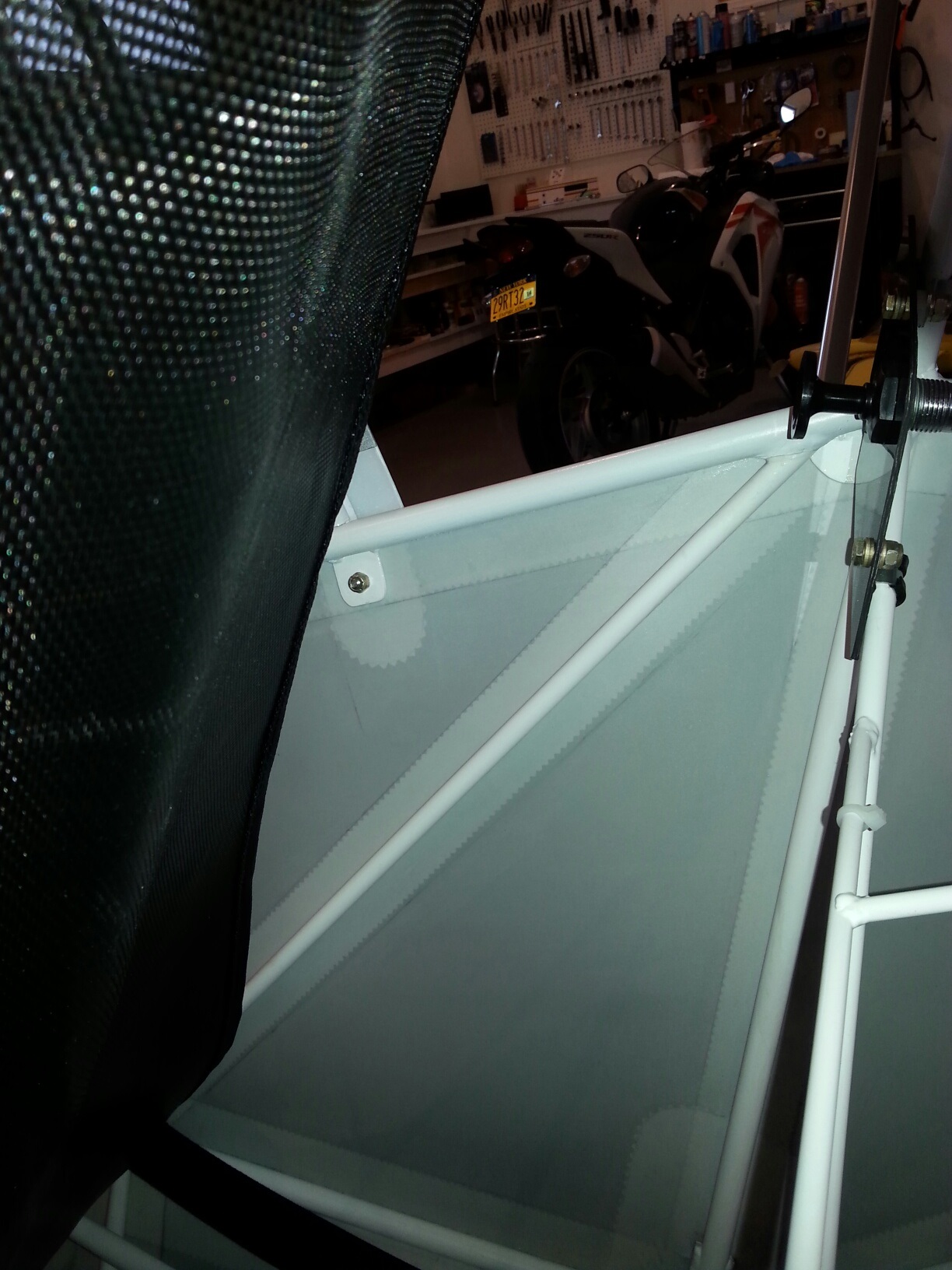
|
| Description: |
|
| Filesize: |
293.35 KB |
| Viewed: |
14348 Time(s) |
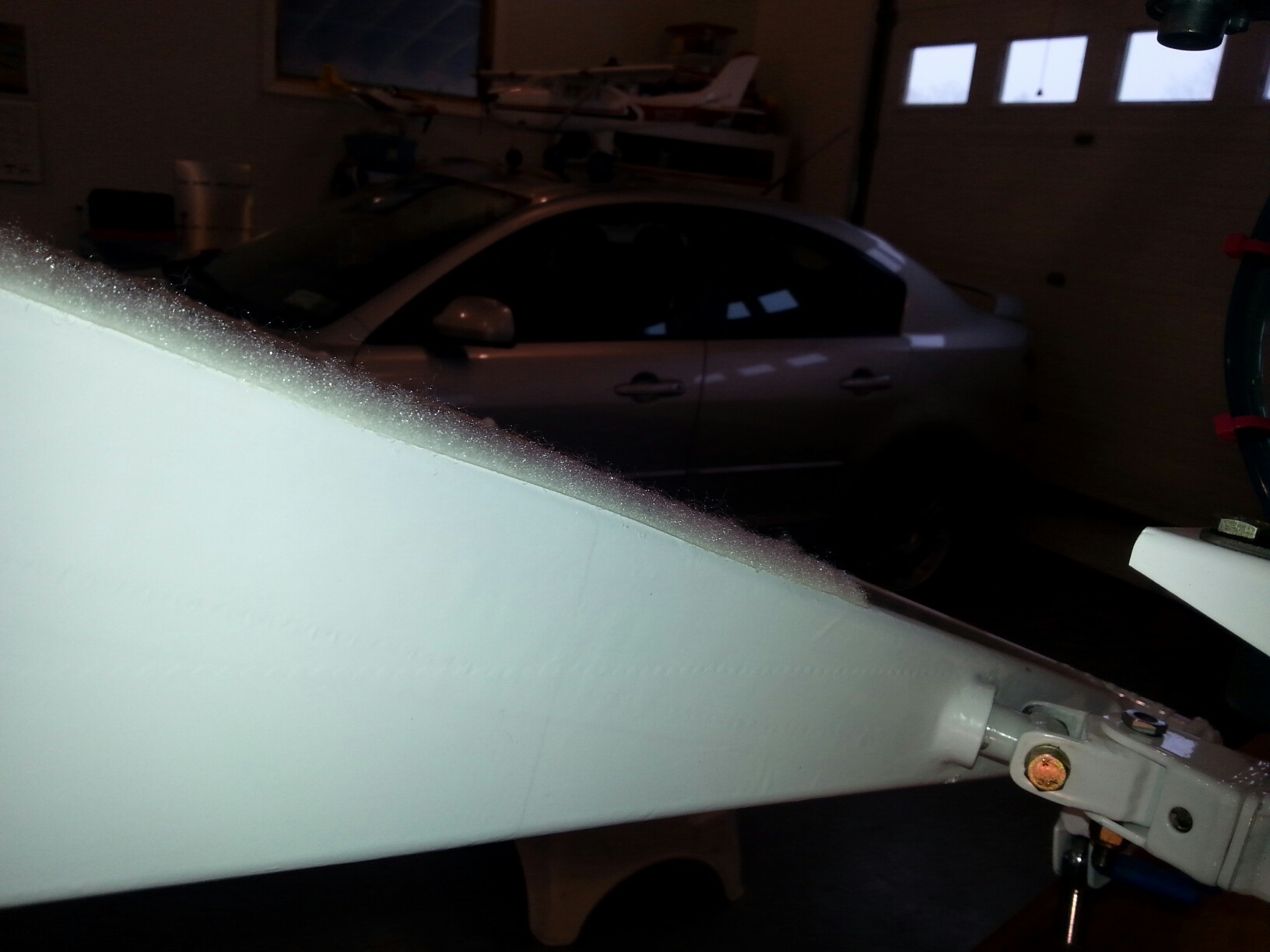
|
| Description: |
|
| Filesize: |
249.67 KB |
| Viewed: |
14348 Time(s) |
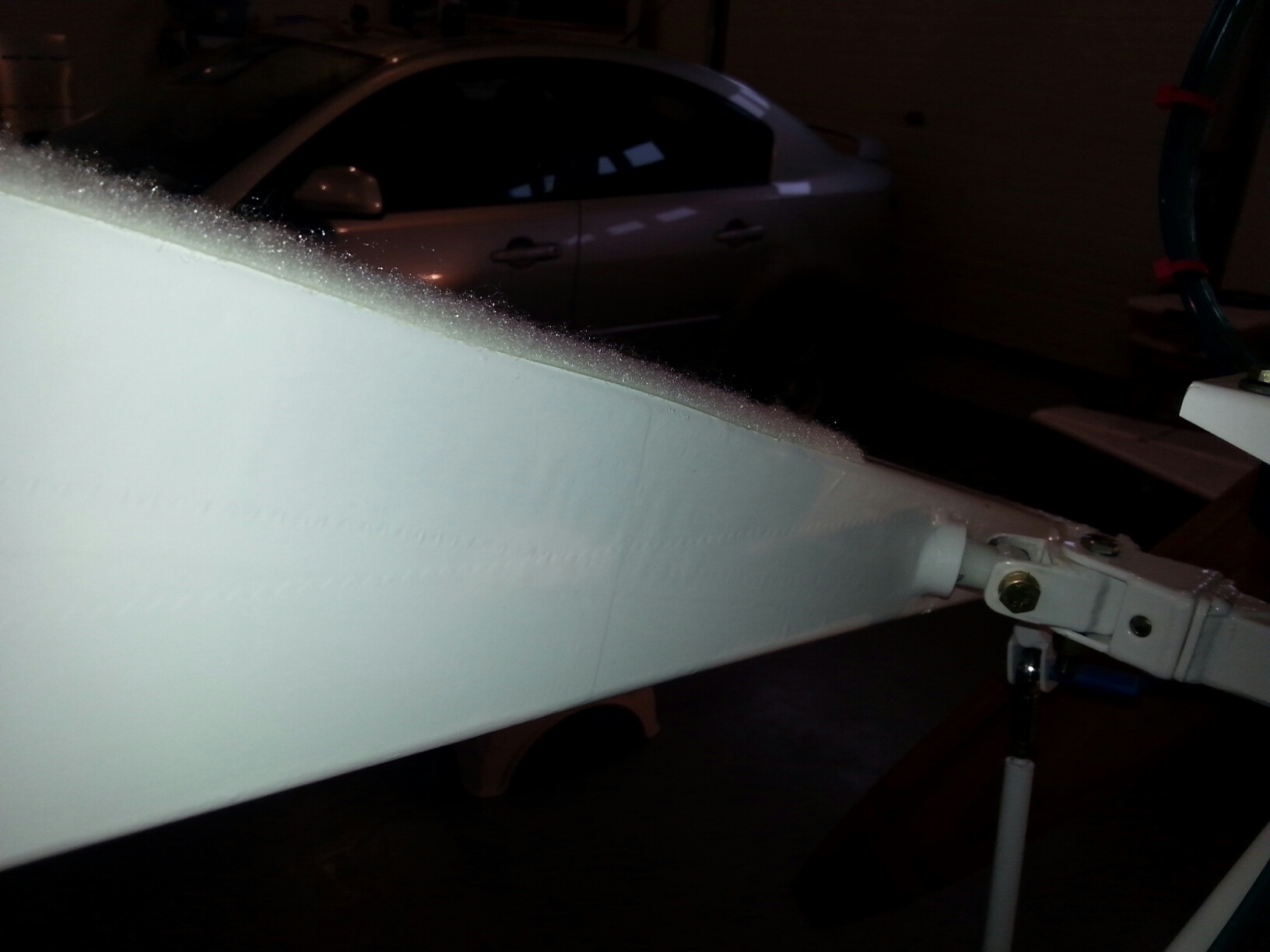
|
| Description: |
|
| Filesize: |
497.49 KB |
| Viewed: |
14348 Time(s) |
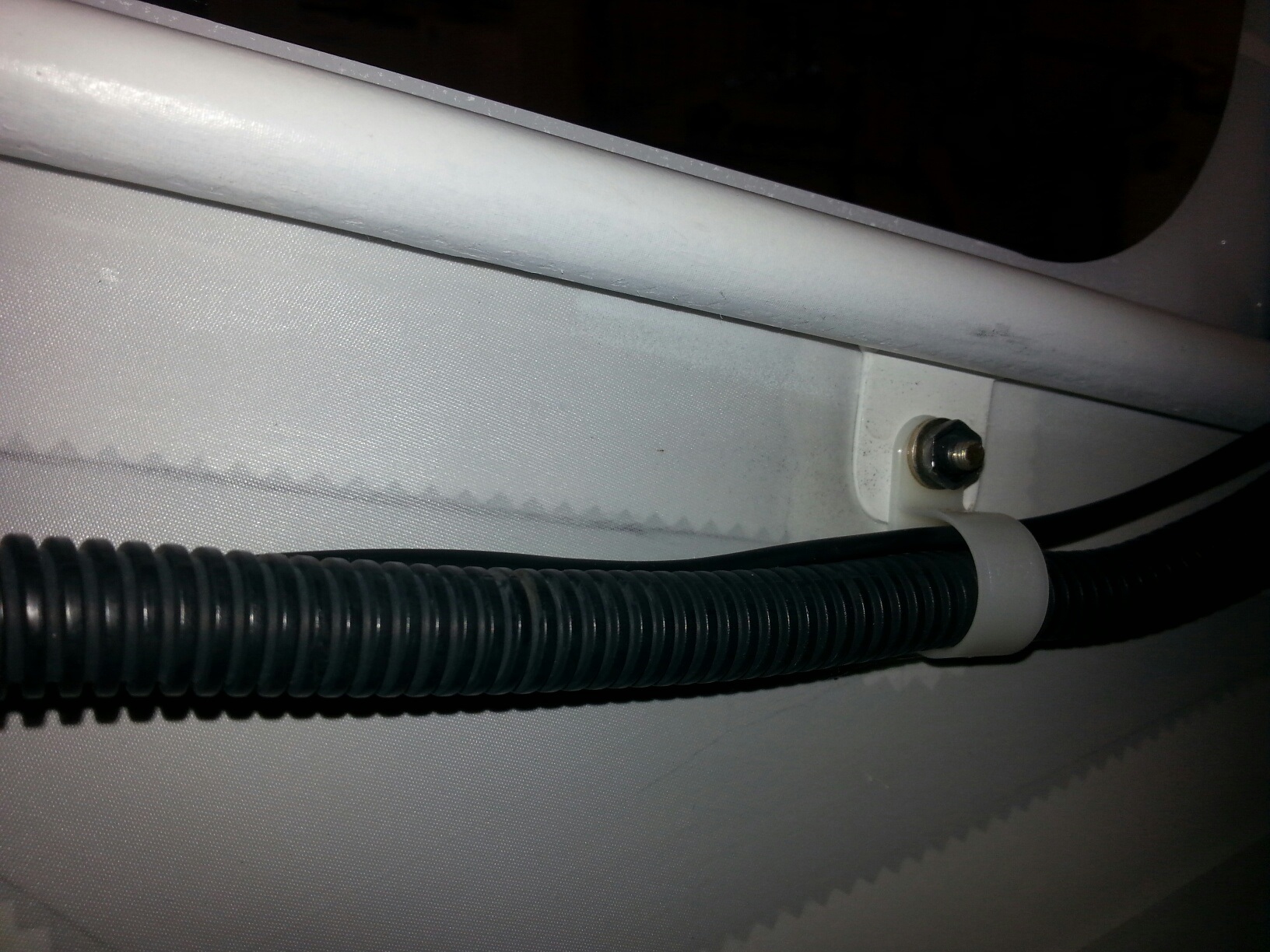
|
| Description: |
|
| Filesize: |
510.62 KB |
| Viewed: |
14348 Time(s) |
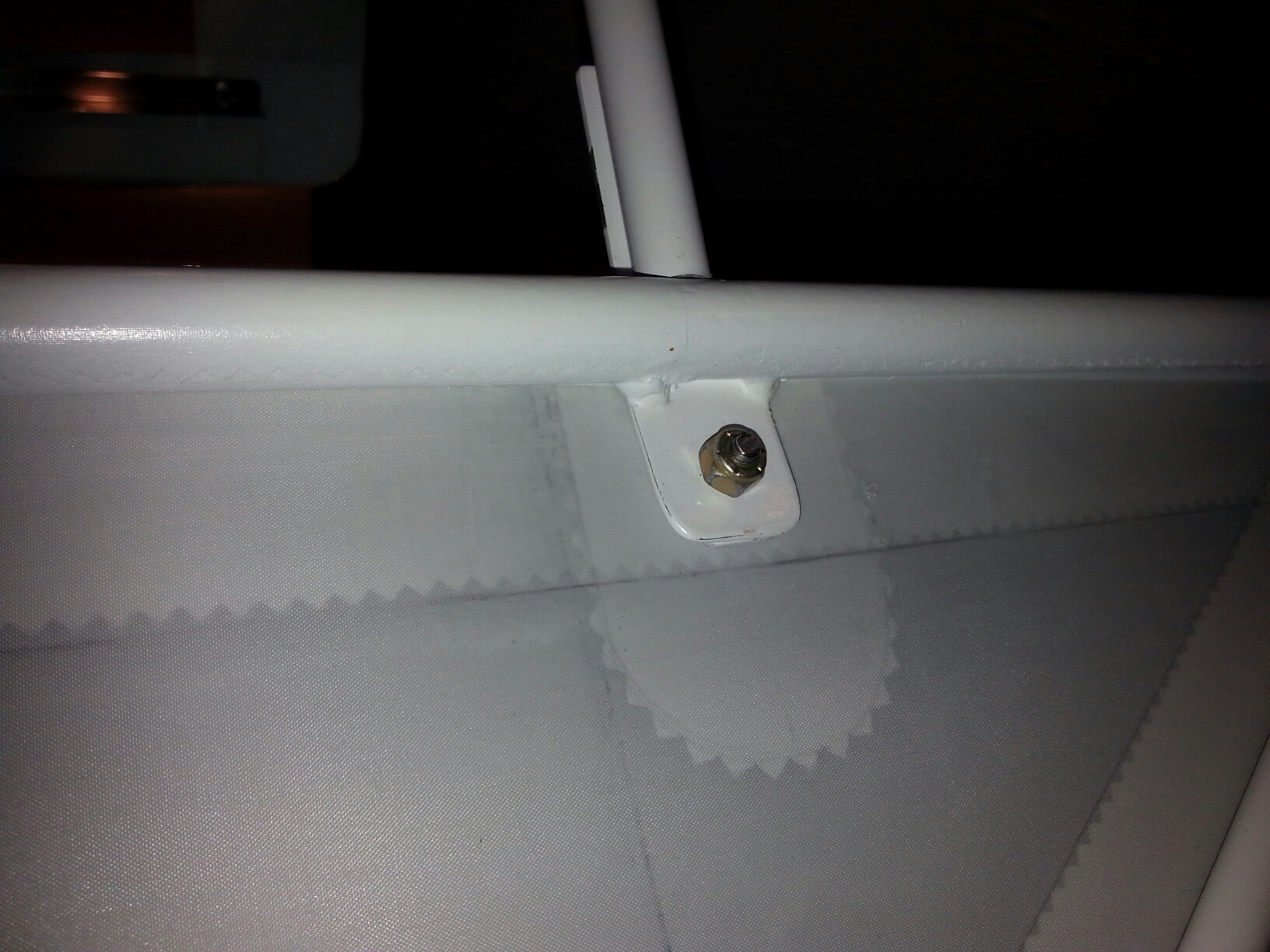
|
| Description: |
|
| Filesize: |
349.61 KB |
| Viewed: |
14348 Time(s) |
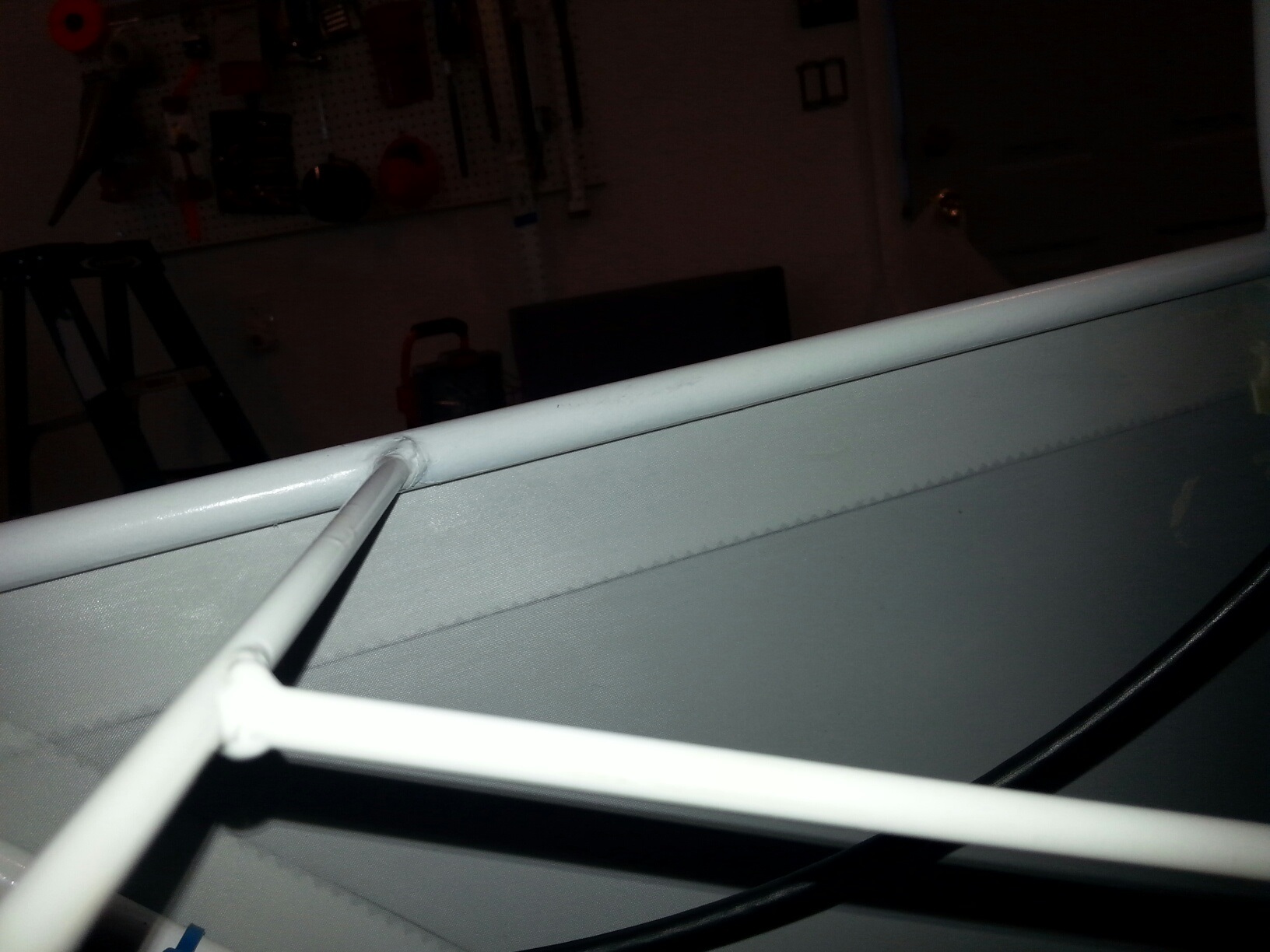
|
| Description: |
|
| Filesize: |
353.42 KB |
| Viewed: |
14348 Time(s) |
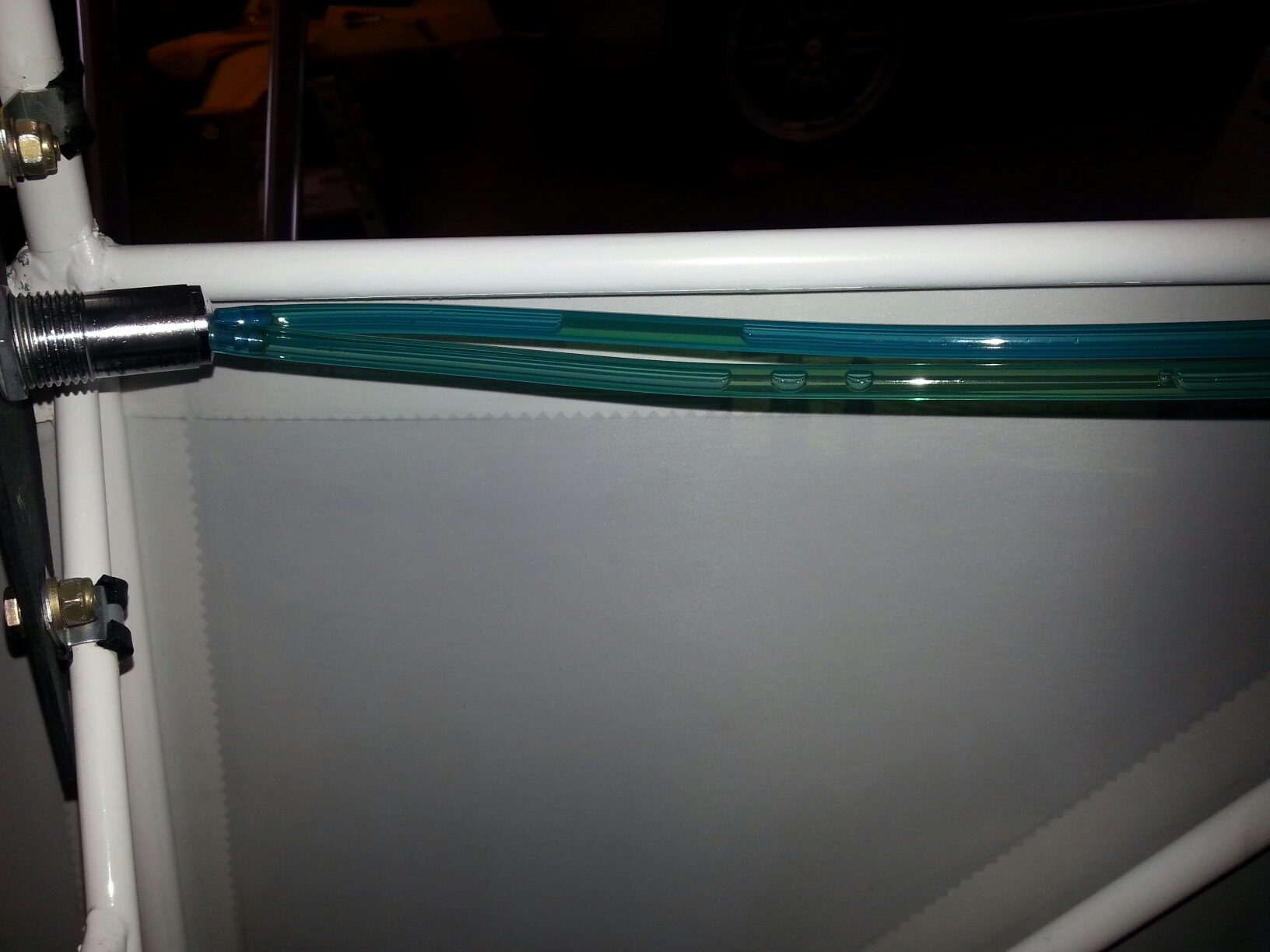
|
| Description: |
|
| Filesize: |
207.21 KB |
| Viewed: |
14348 Time(s) |
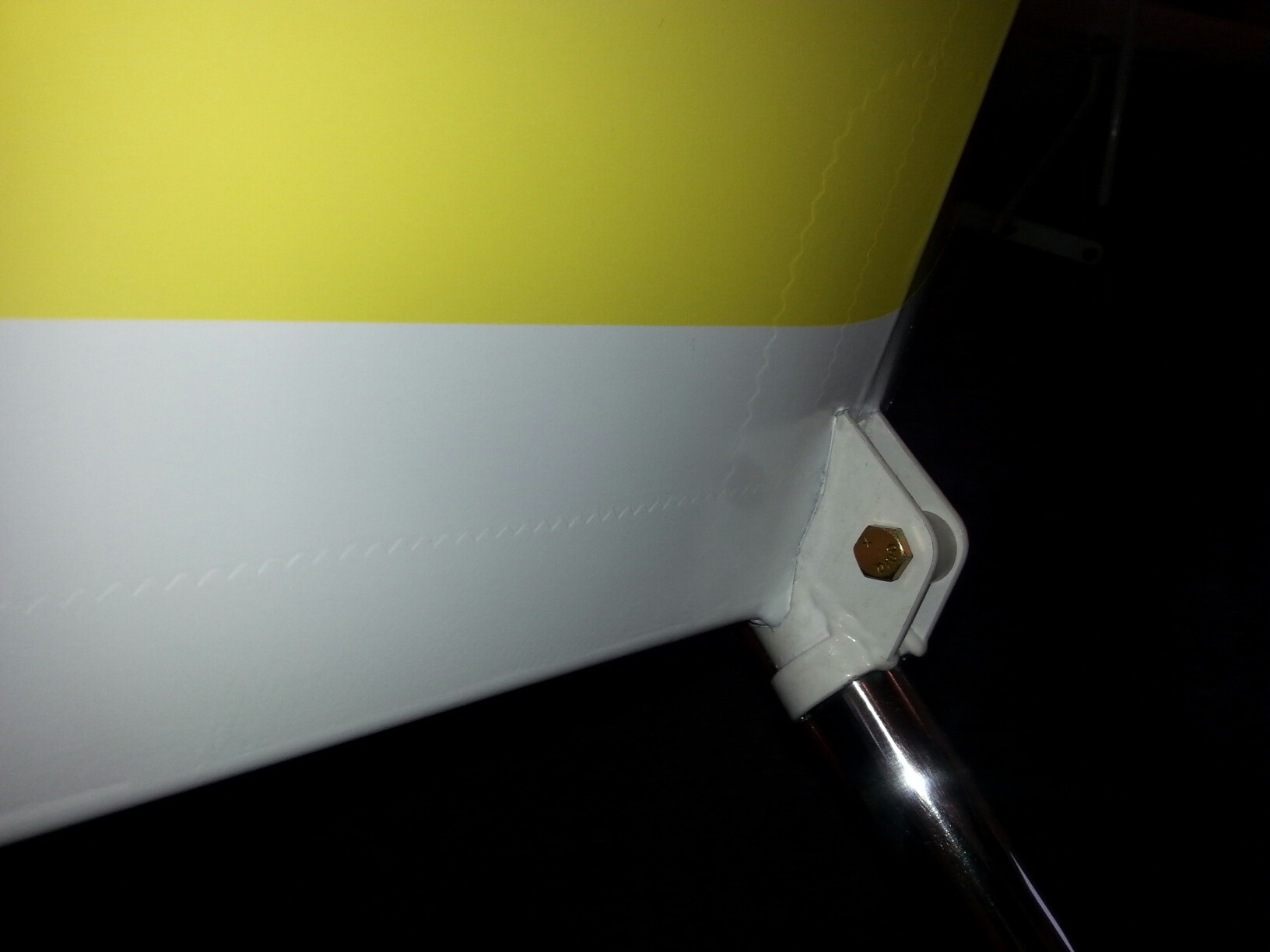
|
|
|
| Back to top |
|
 |
stuart(at)harnerfarm.net
Guest
|
 Posted: Sat Jan 25, 2014 5:46 pm Post subject: Firefly covering photos Posted: Sat Jan 25, 2014 5:46 pm Post subject: Firefly covering photos |
 |
|
Thanks so much! They are saved to my ready reference file.
A tip of the hat to you on your craftsmanship!
I do however still have a couple of questions.
On the fuselage fabric, it would appear that you wrapped the upper longeron
with the pinked edge tape, but I cannot tell how far around the tube you
wrapped the fabric. I would think about half way around would provide
enough base for poly tac on that small of a surface.
I do have a little experience with Dacron fabric. My Dad and I recovered an
Aeronca Chief about 30 years ago and I helped a friend cover his Fisher
Classic about 20 years ago. I understand the problem of knowing how tight
to make the raw fabric, especially on these light weight structures, it can
be really easy to over shrink and damage something.
The Kolb manual suggested using a bunch of 5# weights suspended around the
perimeter to provide the tension. I have not tried that yet, but suspect it
may be too tight for the 1.7 oz fabric, which is all I can find these days.
I think a little less than snug should be about right. I have some scraps
of fabric (2.7 oz. I think) and some expired poly tac that I am going to
play with while calibrating my iron. This well get me used to the process
again, and give me test panels to use when setting up my spray gun. All it
is going to cost is some extra time, which will be well spent if it helps
keep me from doing something on the plane over again.
I found your comments about the pigments interesting and have a question
about that as well.
Was the problem with getting the white to cover the silver or the yellow to
cover the white?
I ask because I can tell you used un-tinted poly brush, but understand that
light colors don't cover dark very well, and poly spray is fairly dark.
I plan on using yellow, red and black. The yellow will be the "base" color
and the red and black with be fairly large areas of contrast. My plan is to
use two coats of un-tinted poly brush, one brushed, one sprayed, each coat
consisting of two cross coats.
Then to skip the poly spray and just add uv blocker to the poly tone. I
don't think I will do the entire structure in yellow as I first planned. I
am now thinking of masking off and painting each color separately over the
poly brush which should still be basically white from the fabric underneath.
I do this for two reasons. One, I am cheap, and two, any area with contrast
color will mean additional coats to that area, adding weight.
I am going to try my best to beat the 254# if I can.
Thanks for your photos and your input.
Stuart
--
| | - The Matronics Kolb-List Email Forum - | | | Use the List Feature Navigator to browse the many List utilities available such as the Email Subscriptions page, Archive Search & Download, 7-Day Browse, Chat, FAQ, Photoshare, and much more:
http://www.matronics.com/Navigator?Kolb-List |
|
|
|
| Back to top |
|
 |
Ducati SS
Joined: 15 Oct 2009
Posts: 93
|
 Posted: Sat Jan 25, 2014 7:51 pm Post subject: Re: Firefly covering photos Posted: Sat Jan 25, 2014 7:51 pm Post subject: Re: Firefly covering photos |
 |
|
I wrapped the fabric around as far as I could work with it, probably more than needed but in most places it was more than half way.
I used a lot of white to cover the silver, yellow over white was no problem. Spent lots of money on white paint and likely added considerable weight. If you look very carefully at the overall tail photo you can see that I added UV blocker to the vertical fin paint and it yellowed a bit.
I discovered a few things about irons. I checked several and found the following. Some iron thermostats have a wide temp. range between low on and high off. I finally found one with a narrow stable range but it cost a bit more than the really cheap versions. The shoe on all the irons at a given set temp. had rather wide variations across the shoe. For these reasons I found the recommended calibration method using a stack of napkins and heat sink to be somewhat inaccurate as only a small area is being sampled. I ended up using one of the non contact infrared thermometers and using the hottest portion of the shoe as my set temp. One of the small RC covering irons was also very helpful.
You are probably already aware of all the reasons Poly Tone is recommended and they are all true but I would use a urethane paint next time. The Poly Tone just is not as durable as the urethanes.
The checker board is Mono coat trim coat which works very well and the tail emblem was cut by a local sign maker after they blew up and adjusted a shop manual drawing.
| | - The Matronics Kolb-List Email Forum - | | | Use the List Feature Navigator to browse the many List utilities available such as the Email Subscriptions page, Archive Search & Download, 7-Day Browse, Chat, FAQ, Photoshare, and much more:
http://www.matronics.com/Navigator?Kolb-List |
|
|
|
| Back to top |
|
 |
Ducati SS
Joined: 15 Oct 2009
Posts: 93
|
 Posted: Sun Jan 26, 2014 8:34 am Post subject: Re: Firefly covering photos Posted: Sun Jan 26, 2014 8:34 am Post subject: Re: Firefly covering photos |
 |
|
Stuart, the following may help when you cover the wings.
One of the reasons I chose to build the Firefly is the strong airframe, however as well designed as it is the uncovered ribs aft of the main spar are a bit flexible. You may find they are bowed and not perfectly parallel , I x braced them using rib stitch cord and that got them very close. After covering the wing and marking reference lines I found the rib apex was still slightly off. I bought several lengths of square hardwood at Lowes about 1/2" and 2 or 3 medium plastic spring clamps with plastic or rubber jaws. Made a nylon hook on the end, reached thru the root end of the wing, hooked the rib and pushed or pulled it into position and then clamped it to the 4130 structure of the root rib. Riveted that rib and then moved on to the next. Ended up with nice straight ribs and rivet lines.
| | - The Matronics Kolb-List Email Forum - | | | Use the List Feature Navigator to browse the many List utilities available such as the Email Subscriptions page, Archive Search & Download, 7-Day Browse, Chat, FAQ, Photoshare, and much more:
http://www.matronics.com/Navigator?Kolb-List |
|
|
|
| Back to top |
|
 |
stuart(at)harnerfarm.net
Guest
|
 Posted: Sun Jan 26, 2014 4:53 pm Post subject: Firefly covering photos Posted: Sun Jan 26, 2014 4:53 pm Post subject: Firefly covering photos |
 |
|
Well now that is another very helpful hint. Thank you for posting it.
I will be sure and look this over real well before I do my covering.
I had wondered about the X-bracing in the wings. I remembered doing this on
the Chief, but I think we tacked it down to each rib so they would not move.
The ribs were wood and the fabric was not glued to the ribs. We used rib
stitching that duplicated the original configuration.
I noticed in the Poly Fiber manual it says to not tie or fasten the
X-bracing to the rib so that the rib was free to move, but it also states
the purpose was to keep the rib in place. Well, which is it? When I think
of X-bracing, I think of floor joist or side walls of a hangar. The purpose
is to keep things from "racking" and getting out of alignment. I would
think the same applies to ribs, so wouldn't you want the bracing attached to
each rib to prevent movement?
My guess is the bracing would be halfway between the main and rear spars?
Any and all input from the list about this is most appreciated.
Thanks again,
Stuart
--
| | - The Matronics Kolb-List Email Forum - | | | Use the List Feature Navigator to browse the many List utilities available such as the Email Subscriptions page, Archive Search & Download, 7-Day Browse, Chat, FAQ, Photoshare, and much more:
http://www.matronics.com/Navigator?Kolb-List |
|
|
|
| Back to top |
|
 |
herbgh(at)nctc.com
Guest
|
 Posted: Sun Jan 26, 2014 5:07 pm Post subject: Firefly covering photos Posted: Sun Jan 26, 2014 5:07 pm Post subject: Firefly covering photos |
 |
|
There are some good you tube vids showing Bryan Milburn building a Kolb
wing...
http://www.youtube.com/watch?v=UVE6sNXwgMc
Herb
On 01/26/2014 06:52 PM, Stuart Harner
wrote:http://www.youtube.com/watch?v=UVE6sNXwgMc
[quote]
Well now that is another very helpful hint. Thank you for posting it.
I will be sure and look this over real well before I do my covering.
I had wondered about the X-bracing in the wings. I remembered doing this on
the Chief, but I think we tacked it down to each rib so they would not move.
The ribs were wood and the fabric was not glued to the ribs. We used rib
stitching that duplicated the original configuration.
I noticed in the Poly Fiber manual it says to not tie or fasten the
X-bracing to the rib so that the rib was free to move, but it also states
the purpose was to keep the rib in place. Well, which is it? When I think
of X-bracing, I think of floor joist or side walls of a hangar. The purpose
is to keep things from "racking" and getting out of alignment. I would
think the same applies to ribs, so wouldn't you want the bracing attached to
each rib to prevent movement?
My guess is the bracing would be halfway between the main and rear spars?
Any and all input from the list about this is most appreciated.
Thanks again,
Stuart
--
| | - The Matronics Kolb-List Email Forum - | | | Use the List Feature Navigator to browse the many List utilities available such as the Email Subscriptions page, Archive Search & Download, 7-Day Browse, Chat, FAQ, Photoshare, and much more:
http://www.matronics.com/Navigator?Kolb-List |
|
|
|
| Back to top |
|
 |
John Hauck

Joined: 09 Jan 2006
Posts: 4639
Location: Titus, Alabama (hauck's holler)
|
 Posted: Sun Jan 26, 2014 5:28 pm Post subject: Firefly covering photos Posted: Sun Jan 26, 2014 5:28 pm Post subject: Firefly covering photos |
 |
|
Kolbers:
X-bracing is not required to keep the ribs in column. That is one of the
jobs of the fabric covering. Once the fabric has been processed and
riveted, the ribs will be secure and not move.
We have been building Kolbs like this for over 30 years. The "normal"
procedure works well.
john h
mkIII
Titus, Alabama
--
| | - The Matronics Kolb-List Email Forum - | | | Use the List Feature Navigator to browse the many List utilities available such as the Email Subscriptions page, Archive Search & Download, 7-Day Browse, Chat, FAQ, Photoshare, and much more:
http://www.matronics.com/Navigator?Kolb-List |
|
_________________
John Hauck
MKIII/912ULS
hauck's holler
Titus, Alabama |
|
| Back to top |
|
 |
russk50(at)gmail.com
Guest
|
 Posted: Sun Jan 26, 2014 5:37 pm Post subject: Firefly covering photos Posted: Sun Jan 26, 2014 5:37 pm Post subject: Firefly covering photos |
 |
|
Stuart
IMHO good thinking on your part. I'm rebuilding an Xrtra wing and saw that there was no X-bracing.
It obviously isn't needed on that wing. The Kolb crew knows what they are doing and what's best for a Kolb aircraft. I don't plan to do anything different.
Good luck,
Russ K
On Jan 26, 2014, at 7:52 PM, Stuart Harner wrote:
[quote]
Well now that is another very helpful hint. Thank you for posting it.
I will be sure and look this over real well before I do my covering.
I had wondered about the X-bracing in the wings. I remembered doing this on
the Chief, but I think we tacked it down to each rib so they would not move.
The ribs were wood and the fabric was not glued to the ribs. We used rib
stitching that duplicated the original configuration.
I noticed in the Poly Fiber manual it says to not tie or fasten the
X-bracing to the rib so that the rib was free to move, but it also states
the purpose was to keep the rib in place. Well, which is it? When I think
of X-bracing, I think of floor joist or side walls of a hangar. The purpose
is to keep things from "racking" and getting out of alignment. I would
think the same applies to ribs, so wouldn't you want the bracing attached to
each rib to prevent movement?
My guess is the bracing would be halfway between the main and rear spars?
Any and all input from the list about this is most appreciated.
Thanks again,
Stuart
--
| | - The Matronics Kolb-List Email Forum - | | | Use the List Feature Navigator to browse the many List utilities available such as the Email Subscriptions page, Archive Search & Download, 7-Day Browse, Chat, FAQ, Photoshare, and much more:
http://www.matronics.com/Navigator?Kolb-List |
|
|
|
| Back to top |
|
 |
stuart(at)harnerfarm.net
Guest
|
 Posted: Sun Jan 26, 2014 6:23 pm Post subject: Firefly covering photos Posted: Sun Jan 26, 2014 6:23 pm Post subject: Firefly covering photos |
 |
|
Thanks Russ, and John H,
It did not make much sense about X-bracing that lets the rib move (not tied
as per Poly Fiber manual) and then fasten the rib to the fabric to make it
stay in place.
Careful rib alignment in.
X-bracing out.
I am still thinking about rivets vs. stitching, but am leaning towards
stitching (thanks for the videos guys) since I already know how to do it and
I don't like drilling holes.
Planning to order my supplies tonight.
I am sure there will be more questions along the way.
Thanks again,
Stuart
--
| | - The Matronics Kolb-List Email Forum - | | | Use the List Feature Navigator to browse the many List utilities available such as the Email Subscriptions page, Archive Search & Download, 7-Day Browse, Chat, FAQ, Photoshare, and much more:
http://www.matronics.com/Navigator?Kolb-List |
|
|
|
| Back to top |
|
 |
rickofudall
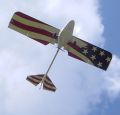
Joined: 19 Sep 2009
Posts: 1392
Location: Udall, KS, USA
|
 Posted: Sun Jan 26, 2014 6:44 pm Post subject: Firefly covering photos Posted: Sun Jan 26, 2014 6:44 pm Post subject: Firefly covering photos |
 |
|
Stuart, One, to reach the full strength of the fabric, it must be shrunk at 350 degrees. There are exceptions to this that are covered in the Poly Fiber Manual.All overlaps, tape requirements, everything is in the Manual.
If you want to save weight there are three colors of Poly Tone that have the silver and require no Poly Spray. From memory, these are Nevada Silver, Rancho Silver, and Piper Trainer Blue. This is covered in Appendix A of the Manual along with reasons to NOT do as you're considering and skipping the Poly Spray coats.
Rick Girard
do not archive
On Sat, Jan 25, 2014 at 7:45 PM, Stuart Harner <stuart(at)harnerfarm.net (stuart(at)harnerfarm.net)> wrote:
[quote]--> Kolb-List message posted by: "Stuart Harner" <stuart(at)harnerfarm.net (stuart(at)harnerfarm.net)>
Thanks so much! They are saved to my ready reference file.
A tip of the hat to you on your craftsmanship!
I do however still have a couple of questions.
On the fuselage fabric, it would appear that you wrapped the upper longeron
with the pinked edge tape, but I cannot tell how far around the tube you
wrapped the fabric. I would think about half way around would provide
enough base for poly tac on that small of a surface.
I do have a little experience with Dacron fabric. My Dad and I recovered an
Aeronca Chief about 30 years ago and I helped a friend cover his Fisher
Classic about 20 years ago. I understand the problem of knowing how tight
to make the raw fabric, especially on these light weight structures, it can
be really easy to over shrink and damage something.
The Kolb manual suggested using a bunch of 5# weights suspended around the
perimeter to provide the tension. I have not tried that yet, but suspect it
may be too tight for the 1.7 oz fabric, which is all I can find these days.
I think a little less than snug should be about right. I have some scraps
of fabric (2.7 oz. I think) and some expired poly tac that I am going to
play with while calibrating my iron. This well get me used to the process
again, and give me test panels to use when setting up my spray gun. All it
is going to cost is some extra time, which will be well spent if it helps
keep me from doing something on the plane over again.
I found your comments about the pigments interesting and have a question
about that as well.
Was the problem with getting the white to cover the silver or the yellow to
cover the white?
I ask because I can tell you used un-tinted poly brush, but understand that
light colors don't cover dark very well, and poly spray is fairly dark.
I plan on using yellow, red and black. The yellow will be the "base" color
and the red and black with be fairly large areas of contrast. My plan is to
use two coats of un-tinted poly brush, one brushed, one sprayed, each coat
consisting of two cross coats.
Then to skip the poly spray and just add uv blocker to the poly tone. I
don't think I will do the entire structure in yellow as I first planned. I
am now thinking of masking off and painting each color separately over the
poly brush which should still be basically white from the fabric underneath.
I do this for two reasons. One, I am cheap, and two, any area with contrast
color will mean additional coats to that area, adding weight.
I am going to try my best to beat the 254# if I can.
Thanks for your photos and your input.
Stuart
--
| | - The Matronics Kolb-List Email Forum - | | | Use the List Feature Navigator to browse the many List utilities available such as the Email Subscriptions page, Archive Search & Download, 7-Day Browse, Chat, FAQ, Photoshare, and much more:
http://www.matronics.com/Navigator?Kolb-List |
|
_________________
The smallest miracle right in front of you is enough to make you happy.... |
|
| Back to top |
|
 |
John Hauck

Joined: 09 Jan 2006
Posts: 4639
Location: Titus, Alabama (hauck's holler)
|
 Posted: Sun Jan 26, 2014 6:55 pm Post subject: Firefly covering photos Posted: Sun Jan 26, 2014 6:55 pm Post subject: Firefly covering photos |
 |
|
Kolbers:
Rib stitching works best on flat wooden rib caps. Flat metal rib caps
normally use screws. My foggy memory is trying to tell me there are also
metal clips for flat metal ribs, but wouldn't want to bet on it. Round rib
tubes work best with fabric rivets. There is minimal contact surface
between the apex of the tube wall and the fabric/reinforcement tape. When
pulling a rib stitch tight on a 5/16" tube, the cord tends to pull the
fabric down, causing a dimpled effect.
Rib stitching is not as durable in the area of prop drumming as fabric
rivets. A local Kolb Slingshot had some problems with in flight vibration
and a loud drumming sound. During an in flight inspection the fabric in the
area of the top right inboard area of the right wing was ballooning. On the
ground it was discovered that the rib stitching had pulled loose. Repairs
were made with fabric rivets. No more problem.
john h
mkIII
Titus, Alabama
I am still thinking about rivets vs. stitching, but am leaning towards
stitching (thanks for the videos guys) since I already know how to do it and
I don't like drilling holes.
Stuart
| | - The Matronics Kolb-List Email Forum - | | | Use the List Feature Navigator to browse the many List utilities available such as the Email Subscriptions page, Archive Search & Download, 7-Day Browse, Chat, FAQ, Photoshare, and much more:
http://www.matronics.com/Navigator?Kolb-List |
|
_________________
John Hauck
MKIII/912ULS
hauck's holler
Titus, Alabama |
|
| Back to top |
|
 |
Ducati SS
Joined: 15 Oct 2009
Posts: 93
|
 Posted: Sun Jan 26, 2014 7:19 pm Post subject: Re: Firefly covering photos Posted: Sun Jan 26, 2014 7:19 pm Post subject: Re: Firefly covering photos |
 |
|
Seems to be a bit of misunderstanding about my intent for the rib stitching cord. It had nothing to do with an attempt at strengthening, as john points out the fabric riveting stabilizes the rib, but the rib has to be moved into the proper position. If the rib is bowed some means of holding it straight has to be used before melting the holes and riveting. I was only passing along the two steps employed to accomplish this. In fact the cord could be cut away after riveting. Probably many a kolb has had the fabric riveted in what ever position the rib was in with no ill effects, I just wanted perfectly straight rivet lines. Many right ways to accomplish most tasks, just thought this might save some time.
| | - The Matronics Kolb-List Email Forum - | | | Use the List Feature Navigator to browse the many List utilities available such as the Email Subscriptions page, Archive Search & Download, 7-Day Browse, Chat, FAQ, Photoshare, and much more:
http://www.matronics.com/Navigator?Kolb-List |
|
|
|
| Back to top |
|
 |
rowedenny
Joined: 09 Mar 2008
Posts: 338
Location: Western PA
|
 Posted: Sun Jan 26, 2014 7:26 pm Post subject: Firefly covering photos Posted: Sun Jan 26, 2014 7:26 pm Post subject: Firefly covering photos |
 |
|
Right you are about pretty much everything in this post John.
Including the use of steel clips instead of rib stitching on some old birds.The 1948 Cessna 170 rag wing we are restoring used steel clips instead of rib stitching, we are canning using them when we recover the wings due to the fact they can rust and wear the holes in the ribs out due to vibration. In their place we are using an STC that utilizes, "drum roll please" aluminum fabric pop rivets just like Kolb uses.
Definitely better on the round tube of a Kolb rib.
Dennis "Skid" Rowe
Mk3, 690L-70, Leechburg, PA
Do not archive
| Quote: | On Jan 26, 2014, at 9:55 PM, "John Hauck" <jhauck(at)elmore.rr.com> wrote:
Kolbers:
Rib stitching works best on flat wooden rib caps. Flat metal rib caps
normally use screws. My foggy memory is trying to tell me there are also
metal clips for flat metal ribs, but wouldn't want to bet on it. Round rib
tubes work best with fabric rivets. There is minimal contact surface
between the apex of the tube wall and the fabric/reinforcement tape. When
pulling a rib stitch tight on a 5/16" tube, the cord tends to pull the
fabric down, causing a dimpled effect.
Rib stitching is not as durable in the area of prop drumming as fabric
rivets. A local Kolb Slingshot had some problems with in flight vibration
and a loud drumming sound. During an in flight inspection the fabric in the
area of the top right inboard area of the right wing was ballooning. On the
ground it was discovered that the rib stitching had pulled loose. Repairs
were made with fabric rivets. No more problem.
john h
mkIII
Titus, Alabama
I am still thinking about rivets vs. stitching, but am leaning towards
stitching (thanks for the videos guys) since I already know how to do it and
I don't like drilling holes.
Stuart
|
| | - The Matronics Kolb-List Email Forum - | | | Use the List Feature Navigator to browse the many List utilities available such as the Email Subscriptions page, Archive Search & Download, 7-Day Browse, Chat, FAQ, Photoshare, and much more:
http://www.matronics.com/Navigator?Kolb-List |
|
|
|
| Back to top |
|
 |
pj.ladd(at)btinternet.com
Guest
|
 Posted: Mon Jan 27, 2014 3:38 am Post subject: Firefly covering photos Posted: Mon Jan 27, 2014 3:38 am Post subject: Firefly covering photos |
 |
|
Hi,
In the UK the defining point between microlights and Light aircraft is
mainly the weight.
The guy who `helped` me with my construction kept adding bits `to strengthen
things up`. An added fillet here, a brace there. All good reasonable things
to do but the offshoot was that I had a very heavy machine which took some
fancy figuring to get it registered.
Work on the basis that Kolb have been producing planes for a long time and
know what they are doing and just leave things alone.
Pat.
| | - The Matronics Kolb-List Email Forum - | | | Use the List Feature Navigator to browse the many List utilities available such as the Email Subscriptions page, Archive Search & Download, 7-Day Browse, Chat, FAQ, Photoshare, and much more:
http://www.matronics.com/Navigator?Kolb-List |
|
|
|
| Back to top |
|
 |
|
|
You cannot post new topics in this forum
You cannot reply to topics in this forum
You cannot edit your posts in this forum
You cannot delete your posts in this forum
You cannot vote in polls in this forum
You cannot attach files in this forum
You can download files in this forum
|
Powered by phpBB © 2001, 2005 phpBB Group
|










